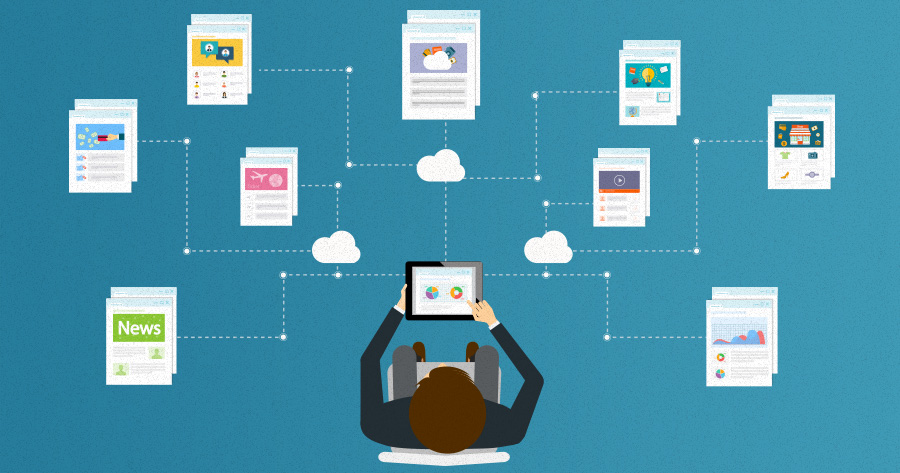Marty and the Doc traveled to 2015 in Back to the future, today we are 4 years ahead of “future” and sure, technology is booming. There are robots, hoverboards, machines acting like humans and everything is automatic. In a world like today’s, it is common knowledge that the means of education must have modernized to their maximum extent.
But for bad or for good, it still remains a critically manual thing. People apply creativity and knowledge to create the best learning courses for learners who grasp the knowledge on their own.
However, building much more efficient, effective, and futuristic courses has become possible-moving-towards-mainstream today, all thanks to amazing technology.
So if you want to know which science-fiction techs are making learning fun in 2019, read on.
1. Cloud computing
Cloud-based technologies have long since made their space in the world. But in the arena of eLearning, it is nothing short of a Holy Grail.
We use the team “eLearning’ colloquially to convey about the entire spectrum of learning based on the internet. And while it has broken down the barriers of education for the most remotely located, it still faces the hurdle of frequent updating.
Cloud computing is the answer to this hurdle faced by digital means of learning. It not only provides a platform that can work with real-time or live information in some cases, but it also nurtures the environment of collaborative learning, data collection for higher assessments, and cost reduction.
In fact, along with cloud-based courses, there are Cloud eLearning Authoring Tools that help in making all the aspects of education, from creation to results, digital.

2. Virtual Reality
As fascinating as the name “Virtual Reality” sounds, it is practically that much fascinating as well. VR or Virtual Reality refers to a technology that uses specialty hardware to display life-like simulations.
VR has made its name in the gaming industry quite well, and now it is on its way to overhaul the learning industry, as we know it. For instance, for the training of surgeons, doctors, and even Air Force pilots, VR is being used actively as an alternative to the traditionally dangerous and more expensive methods of learning.
Now, in the classroom training and the corporate training scenarios also, VR holds have strong potential. Apart from peaking engagement in a class, VR can help students to learn certain things through virtual experiences. And experiences are seldom forgotten.
3. Artificial Intelligence
All kinds of software that we use today are in transition to adapt to AI. Even eLearning authoring tools software are making use of artificial intelligence to create highly complex, sophisticated and yet simple eLearning courses to engage learners.
AI refers to the intuitive intelligence that is displayed by machines, which might seem like a distant thought but today we see it everywhere around us. From our virtual assistants to machine learning, everything is a form of AI application.
When applied to a learning scenario, AI can help students in receiving highly personalized education because it is capable of learning human behavior and adapting to it. For instance, there can be a virtual assistant in an eLearning app which allows students to feed their data and preferences to it and it is responsible for their daily learning and reporting. This sort of setting will be far more effective for today’s digital generation because they are accustomed to technology.

4. Augmented Reality
Many times AR and VR (Virtual Reality) are grouped together in context. But they are two distinct technologies which are contributing highly to the education sector and many other areas individually.
Augmented Reality refers to the technology with “augments” or alters the existing reality with advanced information in a visual way. It superimposes images and animated visuals on the real-life view of the user when seen through a lens or camera.
Many retail stores and games have used this technology to help users navigate through there stores and bringing game characters to reality, respectively.
In the world of learning, it can be used in extremely creative ways. For instance, if you want to teach your students about astronomy, you can simply simulate the positions of stars and constellations for them without them having to leave their houses.
To sum it all up, there are a plethora of unbelievable technologies waiting to be explored when it comes to creating superhit eLearning courses. If you wish to make your course stand out from the crowd then this is the right time to try out these techs. Any educational institute or corporate enterprise will simply thrive with the availability of such advanced resources. The possibilities are endless and the world is ready for changing the way it learns.













Leave a Reply